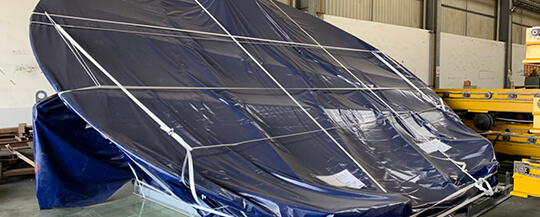In the forming process of the forming wall thickness head, although the forming load is relatively large, the overall wall thickness is relatively uniform due to the less drawing times it undergoes during the forming process. During the forming process, the center part first contacts the punch, and the thinning is hindered. The surrounding metal has been subjected to greater tensile stress, so it is likely to become the weakest area. The calculation shows that the maximum thinning area appears in the range of 10°— 30° with the vertical axis. The forming load of the head is small during multiple forming processes. However, the blank undergoes three deformation processes and has undergone multiple deep drawing and bulging deformations, so the overall deformation and thickness reduction are relatively large, and the wall thickness varies greatly.
Assuming that the minimum wall thickness of the head Smin = 120. 5 mm, the maximum reduction rate is 5.9%, which meets the forming needs. Since a smaller pull ring is used in the first stamping process, the central area of the blank is bent and deformed in advance, and the metal in the larger area is in contact with the punch, so the phenomenon of "backward movement" in the largest thinning area will occur, which appears in the The angle between the vertical axis is within the range of 20°~40°. In addition to this thinned area, another thinned area appears around the vertical axis angle of about 80°(the transition between the rounded corner and the straight edge). The main reason is that the large bending deformation of the rounded corner occurred during the third stamping, which led to the thinning of the rounded corner, and the overall wall thickness of the head showed a "W"-shaped distribution. In the one-time forming process, the upper blank was bent in advance to form a straight edge area without bending and thinning.
